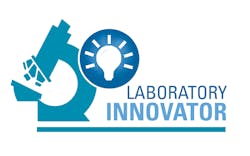Why did you decide to develop a digital microfluidics platform for newborn screening? What problems in newborn testing did you want to address?
What role does microfluidics serve in the overall continuum of testing technologies for newborn screening?
Microfluidics makes a lot of sense in newborn screening, because by miniaturizing an assay, we can get more information from a small amount of sample. If we combine microfluidics with multiplex detection technologies, we can do even better. Newborn screening is an interesting target because of the huge gap between what we screen for today in U.S. public-health newborn-screening programs — about 40 conditions or so, on average — and the 200 conditions that have therapies approved by the U.S. Food and Drug Administration (FDA). And the gap is growing larger.
From a public health perspective, what criteria do public health officials evaluate when deciding whether to add a genetic disease to newborn screening?
I’ll refer you here to the Advisory Committee on Heritable Disorders in Newborns and Children. This is a federal advisory committee that recommends to the state public health programs what conditions should be included in the Recommended Uniform Screening Panel or RUSP. These are public health dollars being spent, for the most part. At the bottom line, it is about gaining a significant benefit at relatively low risk. A newborn screening test costs just a few dollars, but we need to test every baby, before symptoms appear, to effectively screen for these disorders. Each state has its own process for adding new conditions to their own screening panels, which typically includes an advisory panel at the state level that has clinical and community input and a legislative process to pay for it.
Are there additional diseases that you think will become common in newborn screening in the future? If so, what are they?
There are about 7,000 genetic disorders chronicled. And again, with all of the investment made in rare disease therapies over the last couple of decades, there are many more conditions that have FDA-approved therapies than are screened for at this point. We’ll start with those conditions that have effective therapies where early awareness of the condition — through screening — will make a big difference in the child’s life. With the advent of gene therapies — and the ability to permanently cure an affected baby — it’s even more important to address the condition early, before permanent damage is done, which typically means before symptoms are apparent. We need tools that can address many diseases in a single test. I am hopeful that such tools are on the near-term horizon, but it will take investment, and perhaps a fresh approach to the problem. Newborn screening is over 50 years old in the United States and has gone through dramatic technology advancements a few times since then. It’s time for another technology leap forward. But then, we also have to address resources for follow-up, cost of therapy, and a number of other issues.
How do you expect the role of digital microfluidics in diagnostic lab testing overall (not just newborn screening) to evolve over the next three to five years?
Digital microfluidics enables miniaturization of assays, so we can make the most of the sample volume that we can afford to extract. This is true of any microfluidics technology. Where digital microfluidics is different — and better — is when we perform multiple test types, not only on the same instrument, but on the same sample, in a rapid, multifunctional syndromic test panel. Today’s point-of-care diagnostic instruments — and the large analyzers in the clinical lab, for that matter — are all aligned with a specific test type. Many perform only a single test. If you need diagnostic information across test types, that means you must collect multiple sample tubes, test them on different machines, and maybe even send them to different labs. Then you have to integrate the data for the clinician. This takes time and presents challenges to the phlebotomists, the labs, and the clinicians — not to mention the patients. Syndromic testing is increasingly adopted in infectious disease diagnostics, while multi-functional syndromic testing, though not seamless, is largely confined to central laboratories. With the advanced technological flexibility of digital microfluidics, multifunctional syndromic testing can be performed in distributed settings, saving time, cost and precious lives.


